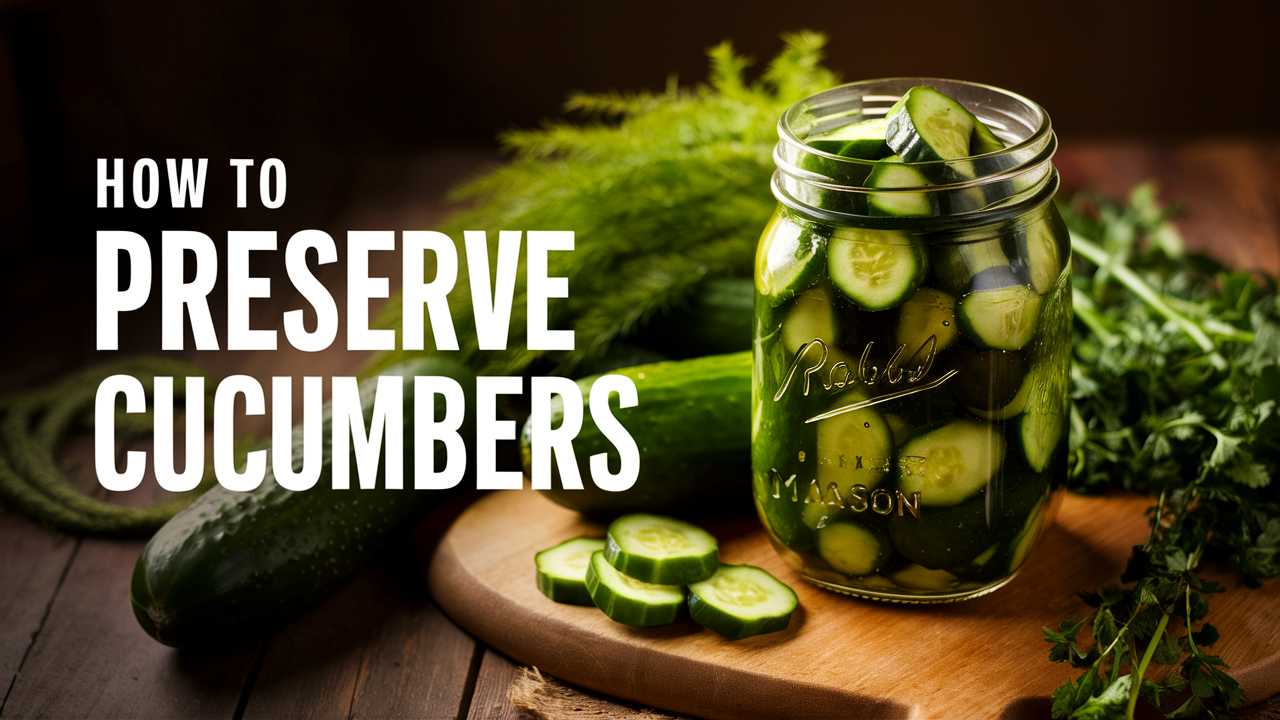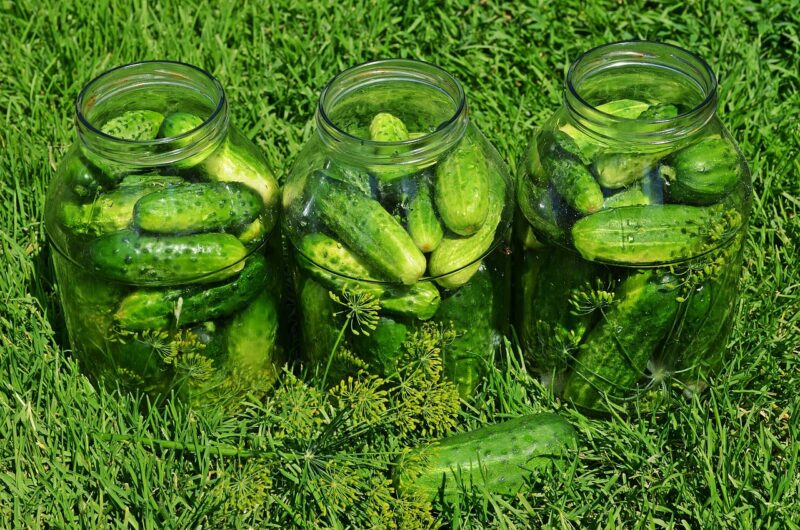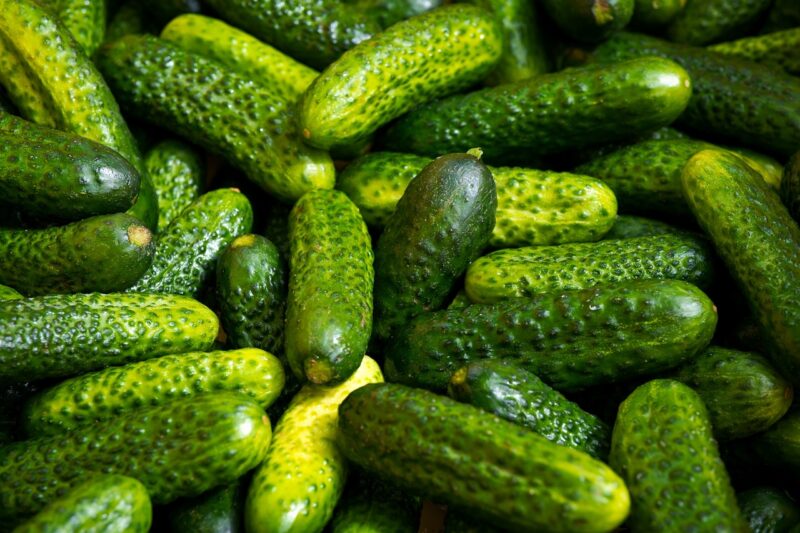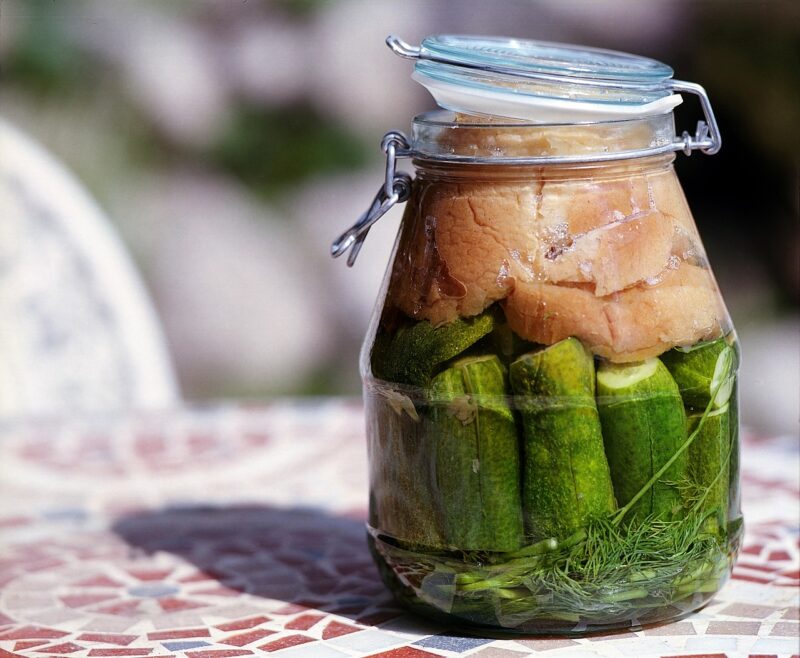Fresh cucumbers are crisp, refreshing, and can complement a wide variety of dishes. Yet, once the summer fades and homegrown harvests dwindle, many yearn to capture that fleeting essence. Keep reading as we explore preservation methods, share personal anecdotes, and offer advice to help you make the most of your cucumber bounty.
Understanding Cucumber Varieties
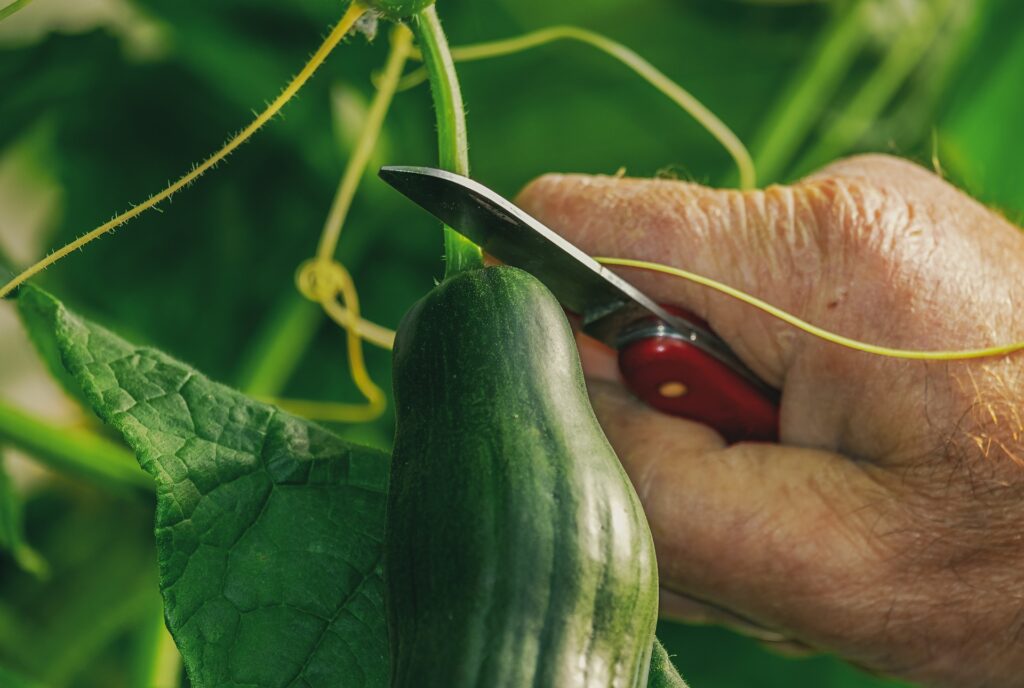
Before embarking on preservation methods, it’s essential to know that not all cucumbers are created equal. There are two primary categories: slicing cucumbers and pickling cucumbers.
Slicing Cucumbers: Typically larger and more slender, these cucumbers are often found in salads, sandwiches, and as snacks. They possess fewer seeds and a milder taste.
Pickling Cucumbers: Smaller, bumpy, and often called “burpless,” or “Persian” cucumbers pack a punch in flavor and crunch, making them perfect for pickling. Their skin is thicker, which allows them to hold up well in heat processing, a factor that will be beneficial when we discuss pickling techniques.
Choosing the right variety ensures the preservation method you select complements your intention. If you’re yearning for juicy sandwiches, slicing cucumbers are ideal fresh, while pickling cucumbers are game-changers for relishes and pickles.
Methods of Preservation
Preserving cucumbers can take various forms, from pickling to freezing, each method offering a unique outcome. Let’s explore these methods more closely.
Pickling Cucumbers
One of the most celebrated forms of cucumber preservation is pickling. This ancient technique not only extends the life of cucumbers but also infuses them with bold flavors.
Basic Pickling Recipe: Among endless variations, a simple dill pickle recipe can be a delightful starting point.
Ingredients:
Fresh pickling cucumbers
White vinegar
Water
Salt (pickling salt preferred)
Fresh dill
Garlic cloves
Optional: chili flakes, mustard seeds
Process:
Rinse cucumbers and cut them as desired (whole, spears, or slices).
Create the brine by combining equal parts vinegar and water in a saucepan. For every cup of brine, add 1 tablespoon of salt, and heat until the salt dissolves.
Pack cucumbers tightly into clean, sterilized jars along with dill and garlic.
Pour the hot brine over the cucumbers, leaving a little headspace before sealing the jars.
Process in a water bath canner for 10–15 minutes or store in the refrigerator for quick pickles.
This process can vary with regional recipes, but the result remains consistent—a tangy, crunchy snack enjoyed throughout the year.
Refrigerator Pickles
If the thought of traditional canning feels intimidating, refrigerator pickles are a fantastic alternative for quick preservation. This no-cook method allows cucumbers to pickle in the fridge without extensive processing.
To make refrigerator pickles, simply prepare your cucumbers as before, then add them to a jar with vinegar, water, sugar, and your choice of spices. Chill for at least 24 hours to enjoy fresh, zesty slices.
Fermentation
Another fascinating method of preservation is fermentation. This organic process not only extends the shelf life of cucumbers but also nurtures beneficial probiotics that are great for gut health.
Start by following these basic steps:
Dissolve salt in water to create a brine—typically a 2% salt solution does the trick.
Submerge cucumbers in this brine, ensuring they stay underwater using a weight.
Allow the jar to ferment at room temperature for several days (up to 2 weeks) depending on your tartness preference.
Once fermented to your liking, transfer to the refrigerator to halt fermentation.
Fermented cucumbers come with a rounded flavor profile that enhances any charcuterie board or adds a punch to sandwiches.
Freezing Cucumbers
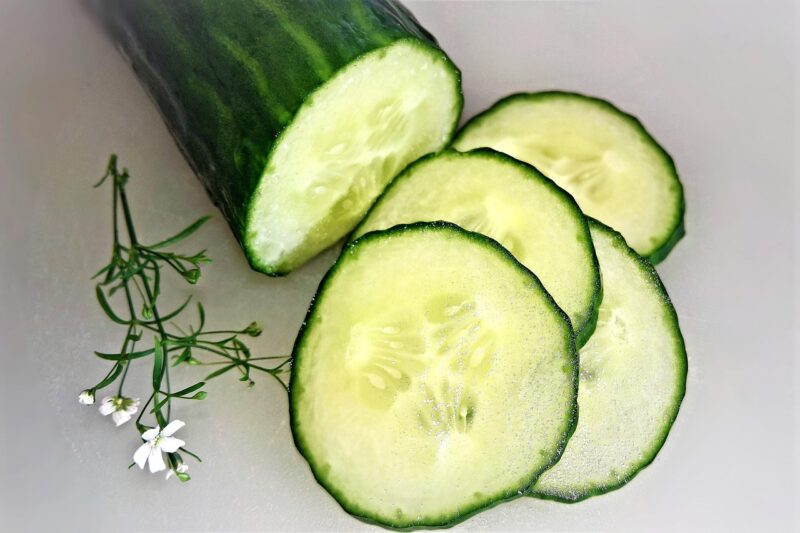
While cucumbers are primarily enjoyed fresh or pickled, freezing is another viable method for preservation, particularly if you plan to incorporate them into cooked dishes. Remember, freezing changes their texture, making them best suited for soups, stews, or smoothies rather than raw salads.
Here’s how to freeze cucumbers:
Rinse and slice cucumbers, patting them dry to remove excess moisture.
Blanch the slices in boiling water for two minutes, then plunge into ice water to stop the cooking process.
Drain and pack them into freezer-safe bags, removing as much air as possible before sealing.
Label and date before placing them in the freezer.
Creative Uses for Preserved Cucumbers
Once you’ve adequately preserved cucumbers, the fun begins in the kitchen! Creative uses for pickled and fermented cucumbers can elevate your dishes and impress guests.
Culinary Applications
Cucumber Relish: A staple in many kitchens, relish can enhance burgers, sandwiches, or grilled meats. Combine finely chopped pickles with onions, bell peppers, and a bit of sugar for a flavorful topping.
Salad Add-ins: Thinly sliced fermented cucumbers can add a tangy flair to simple salads, pairing wonderfully with greens and creamy dressings.
Tzatziki Sauce: This classic Greek dip pairs yogurt with grated cucumber, garlic, and herbs for a refreshing sauce perfect for vegetables, pita, or grilled meats.
Cocktail Garnishes: Pickled cucumbers or fermented variations can add a vibrant touch to cocktails, particularly in drinks like Bloody Marys or gin and tonics.
Charcuterie Boards: Incorporate pickled or fermented cucumbers as a surprise element on charcuterie boards. Their acidity complements cheeses and cured meats brilliantly.
Benefits Beyond the Plate
The benefits of preserving cucumbers extend beyond personal enjoyment. Engaging in the preservation process allows individuals to connect with the seasons, promotes sustainability, and advocates for local agriculture.
A Sustainable Choice
By learning how to preserve cucumbers, we champion local food production and cultivate a more sustainable relationship with our environment. This practice minimizes food waste; rather than discarding excess cucumbers at the end of the harvest season, we create lasting memories and meals for months to come.
A Connection to Heritage
Preservation techniques have been passed down through generations, bridging a gap between traditional and modern culinary practices. Engaging in pickling or fermenting is a respectful nod to our ancestors, who relied on these methods to navigate extensive winters and short growing seasons. Each jar of pickles represents not only an investment in flavors but also a connection to the earth and our familial or cultural heritage.
Tips for Successful Preservation
As with many culinary adventures, success lies in both the technique and the ingredients. Here are some vital tips to enhance your cucumber preservation skills:
Choose Fresh, High-Quality Produce: Start with cucumbers that are firm and well-formed. For pickling, greener and bumpy cucumbers usually yield better results.
Sterilize Jars Properly: For canned goods, keeping jars sterile is vital to prevent bacteria growth. Boil jars in water or run them through a dishwasher before use.
Experiment with Flavors: Don’t hesitate to personalize your pickling brine. Alternate vinegars, spices, or sweeteners add distinct personality to your preserved cucumbers.
Store Properly: While refrigerator pickles enjoy a short shelf life, canned pickles can last up to a year. Always store in a cool, dark place, and once opened, consume promptly.
Label Your Jars: As tempting as it is to dive straight into tasting, labeling jars with contents and dates ensures you stay organized and aware of your inventory.
Closing Thoughts
Preserving cucumbers transforms more than just vegetables; it reveals a celebration of seasons, creativity, and nostalgia. Whether through pickling, fermenting, or freezing, each method provides a way to capture summer’s fleeting flavors, making them available for enjoyment year-round.


